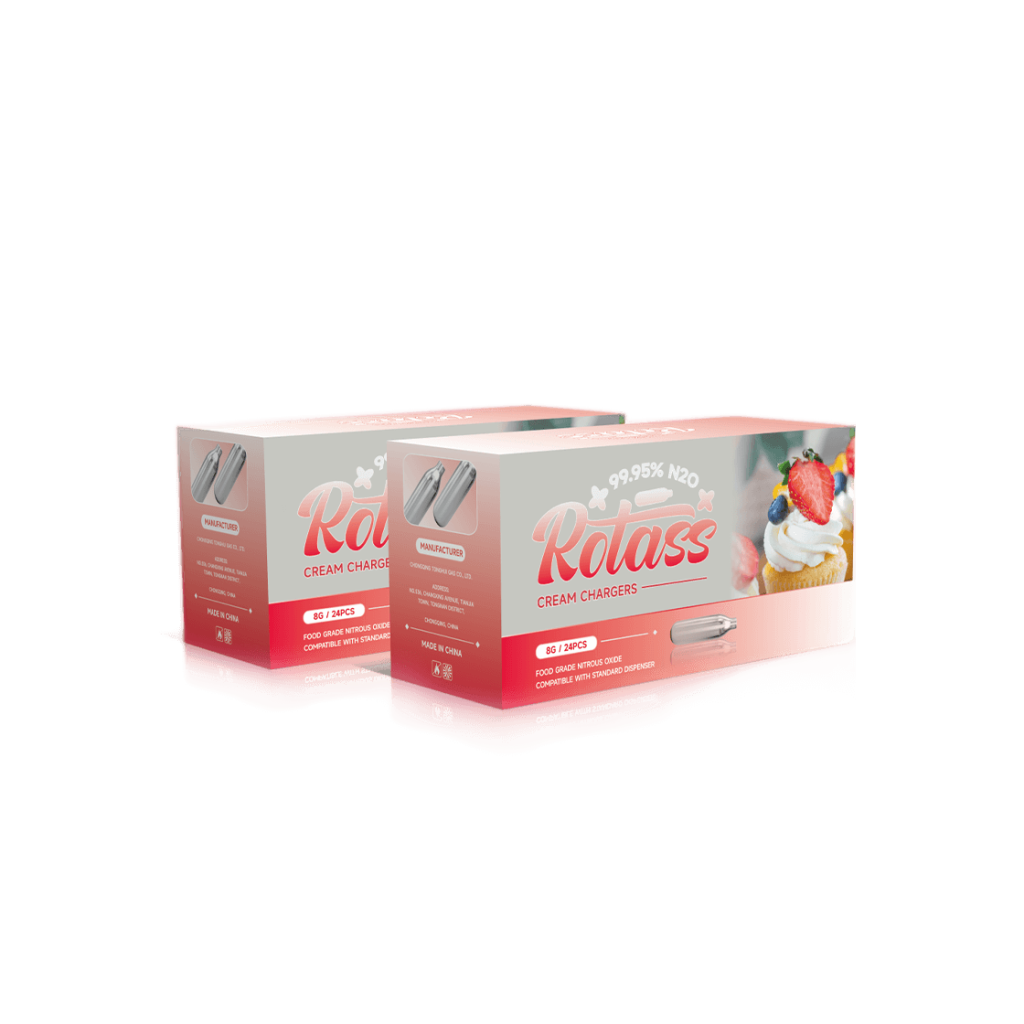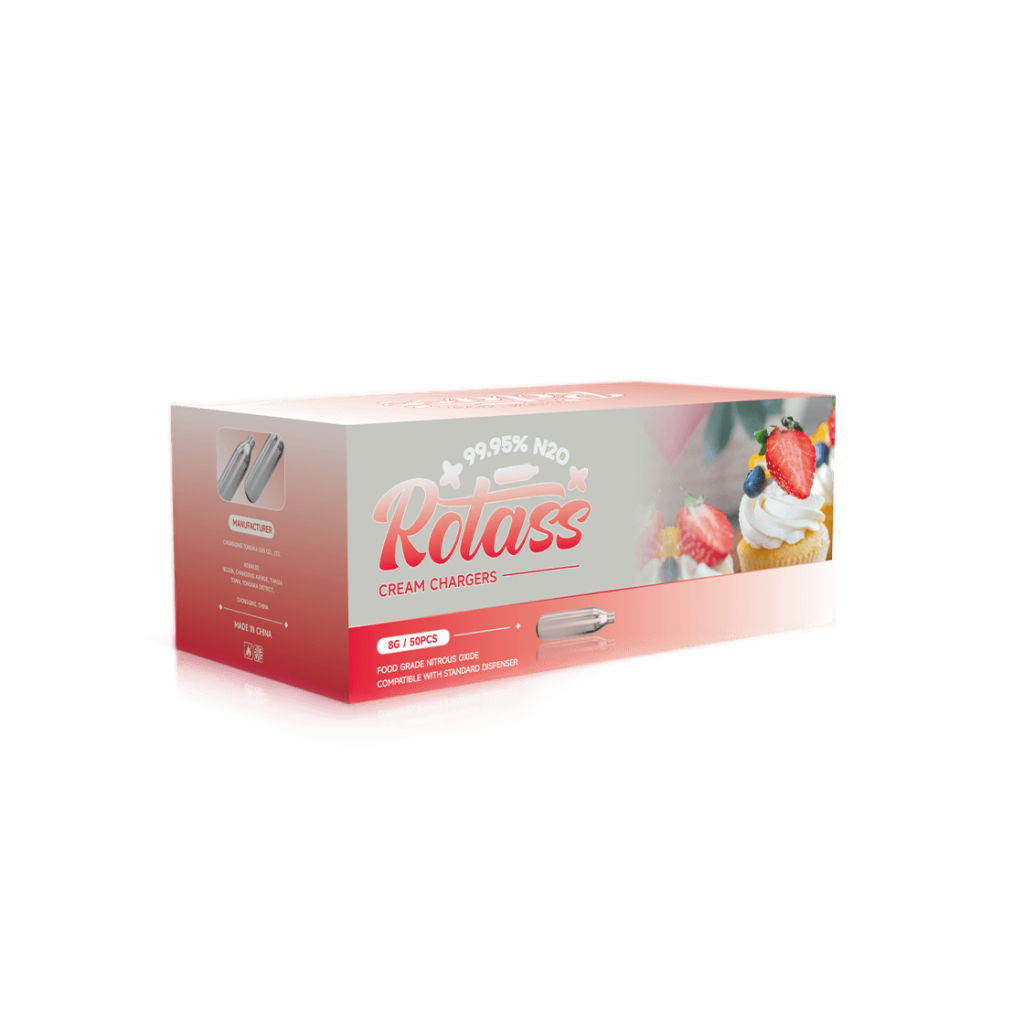2024 / 07 / 29
Cream Chargers: Usability, Disposal, and Bulk Benefits
The cream charger is a device that has revolutionized the way chefs and home cooks whip cream. But with the convenience comes questions about maintenance, disposal, and the advantages of buying in bulk. In this article, we will explore three key areas: ensuring your cream charger is in top working condition, responsibly managing discarded units, and uncovering the benefits of purchasing cream chargers in bulk. By addressing these topics, we aim to provide a comprehensive guide that not only enhances your culinary experience but also promotes sustainability and practicality.

How to Make Sure the Cream Charger Is Usable?
To ensure that a cream charger is usable, follow these detailed steps:
- Check the Expiration Date: Cream chargers contain nitrous oxide (N2O), which degrades over time. Before using a charger, inspect the expiration date printed on the cylinder to ensure it has not passed its use-by date. An expired charger may not work properly or could be unsafe to use.
- Inspect the Physical Condition: Examine the charger for any visible damage, such as dents, rust, or other signs of wear. Damaged chargers might leak N2O or fail to operate correctly during use.
- Perform a Leak Test: Submerge the charger in water and observe for bubbles escaping from the seams. Bubbles indicate that the charger is likely leaking and should not be used.
- Check the Pressure Gauge: If the charger has a pressure gauge, make sure the needle indicates the correct pressure level. A significant deviation from the expected pressure could suggest a faulty charger.
- Assess Storage Conditions: Consider how the charger has been stored. Extreme temperatures or direct exposure to sunlight can degrade the N2O, affecting its ability to perform as intended. Store cream chargers in a cool, dry place away from heat sources.
- Verify Model Compatibility: Ensure that the cream charger is compatible with the dispenser you plan to use. Chargers come in different sizes and styles, so it’s important to match them correctly to avoid malfunctions.
- Follow the Manufacturer’s Instructions: Adhere to the manufacturer’s guidelines for using the cream charger. Proper handling is crucial for both safety and optimal performance.
By carefully checking each of these points, you can determine whether a cream charger is suitable for use and minimize the risk of issues during operation. Remember to handle all pressurized containers with care to prevent accidents.

How to Deal with the Discarded Cream Charger?
Discarded cream chargers, also known as whipped cream canisters or N2O cartridges, can be a common byproduct in kitchens that use whipped cream dispensers. These small metal cylinders contain nitrous oxide (N2O) which is used as a propellant to whip the cream. Once empty, they need to be disposed of properly to avoid environmental harm and ensure safety. Here’s how to handle and dispose of discarded cream chargers:
- Emptying the Charger: Before disposing of the charger, ensure that it is empty. This can be done by attaching it to a whipped cream dispenser and dispensing the remaining gas until the dispenser no longer expels any gas. This step is crucial for safety reasons, as the residual gas can be flammable.
- Disconnection: After emptying, disconnect the charger from the dispenser. This is usually done by unscrewing it or releasing it from its holder, depending on the design of your dispenser.
- Check for Damage: Inspect the charger for any signs of damage such as dents, cracks, or corrosion. Damaged chargers can pose a safety risk and should be handled with care. If the charger is damaged, it should be treated as hazardous waste.
- Local Recycling Guidelines: Check with your local waste management or recycling facility to understand their specific guidelines for disposing of metal waste. Some facilities have specific bins or containers for metal recycling, and it’s important to follow these guidelines to ensure that the charger is recycled properly.
- Recycling: If your local recycling center accepts metal waste, you can place the empty chargers in the appropriate recycling bin. Metal recyclers can melt down the chargers and reuse the metal, which is an environmentally friendly way to dispose of them.
- Specialized Services: Some areas may have specialized services that collect and dispose of gas canisters. These services are often more knowledgeable about how to handle and recycle gas containers safely.
- Safety Precautions: Always handle empty chargers with care. Do not attempt to puncture or burn them, as they can still contain residual gas and may pose a risk of explosion or fire.
- Storage: If you cannot immediately dispose of the chargers, store them in a cool, dry place away from direct sunlight and heat sources. Avoid storing them in places where they might be punctured or crushed.
- Legal Requirements: Familiarize yourself with any local laws or regulations concerning the disposal of gas canisters. In some areas, there may be specific legal requirements for their disposal that must be followed.
- Educate Others: If you work in a commercial kitchen or frequently use whipped cream dispensers, it’s important to educate others on the proper disposal methods for empty chargers. This helps ensure that everyone is following safe and environmentally responsible practices.
By following these steps, you can safely and responsibly dispose of discarded cream chargers, contributing to a cleaner environment and avoiding potential safety hazards.

What Are the Benefits of Bulk Whip Cream Charger?
Bulk whip cream chargers offer several advantages over individual chargers, particularly in commercial settings or for frequent users who require large quantities of whipped cream. Here are some key benefits:
- Cost Efficiency: Buying in bulk typically results in cost savings per unit. Since whip cream chargers are used frequently in food service industries, purchasing larger quantities can lead to significant reductions in the overall cost of goods.
- Time Savings: In a busy kitchen or catering environment, the ability to produce whipped cream quickly is essential. Bulk chargers allow for continuous production without the need to stop and replace individual chargers, which can save time and maintain productivity.
- Space Saving: Storing multiple single-use chargers can take up more space than a single bulk charger. A bulk system keeps everything streamlined and reduces clutter in storage areas.
- Reduced Waste: Using bulk chargers generates less packaging waste compared to individual chargers, which is beneficial for both environmental sustainability and reducing waste management costs.
- Consistent Quality: Bulk systems often provide a more consistent product because they are designed to maintain pressure and temperature more steadily, leading to uniformly whipped cream every time.
- Professional Results: Commercial establishments value consistency in their products. Bulk chargers help maintain the same quality of whipped cream across different servings and throughout the day.
- Versatility: Some bulk chargers can be used with various dispensing nozzles, allowing for flexibility in creating different textures and designs of whipped cream for decorative purposes.
When considering a bulk whip cream charger, it’s important to choose a model that suits the specific needs of the business or usage scenario, such as the volume of whipped cream required per hour, the available counter space, and the desired features for efficiency and ease of use.

Conclusion
The cream charger is not just an appliance—it’s a culinary companion that can transform your creations with ease and efficiency. By following the guidelines on ensuring its usability, you can prolong its lifespan and maintain its performance, leading to consistent results every time. Responsibly dealing with discarded cream chargers not only adheres to environmental standards but also reflects a commitment to sustainability in your kitchen. Lastly, the benefits of bulk purchasing cream chargers extend beyond mere convenience; they can save you money, reduce waste, and streamline your inventory management. Follow the whipped cream chargers supplier Rotass, whether you’re a professional chef or a home cook, understanding these aspects of cream chargers will undoubtedly enrich your culinary journey, making your time in the kitchen both enjoyable and eco-friendly.










